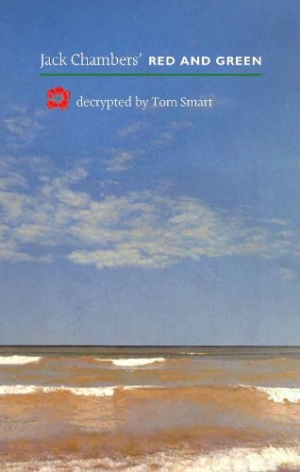Jack Chambers' Red and Green
An Artist's Inquiry into the Nature of Meaning
- 2013 INDIES Winner
- Silver, Philosophy (Adult Nonfiction)
Tom Smart has embarked on a noble mission to decipher Chambers’ intellectual and deeply meaningful work about art, life, and spiritual philosophy.
Jack Chambers’ Red and Green is a peculiar work of art criticism that attempts to explain a complex, fragmented manuscript left by an artist after his early death. Jack Chambers was diagnosed with leukemia in the late 1960s, and the event served as an intellectual catalyst as he embarked on a near decade-long quest for meaning and understanding. Concerned with perception, representation, and comprehension, Chambers’ writing is steeped in esoteric philosophy and spiritualism, his concern with art soon becoming secondary to his rigorous examination through art of both the world and epistemology.
The text, however, is not easily digested—not only due to difficult content, but also its very physical formulation. Photographs are provided throughout of the actual document Chambers’ wrote, the material itself resembling one of William S. Burroughs’s “cut-up” works. For this reason, the work has been “translated” by biographer Tom Smart, who attempts to form a cohesive message from the chaotic—but meaningful—source material. Red and Green, the explanation of Chambers’ work, is segmented into small, palatable postulations interrelated by central tenets concerned with art.
Much of Smart’s text is devoted to deciphering Chambers’ complex theories regarding dichotomy, contradiction, and ultimately the unity of all things. Readers familiar with philosophy will note the similarity between these theories and the Aristotelian conception of form and matter, though Chambers almost always includes references to the metaphysical when addressing art and our relationship with it.
Critical and skeptical readers may take issue with the clunky juxtaposition of spirituality with his other, more sophisticated arguments—indeed, the unverifiable is often treated as real, feeling out of place in the work, despite being so prominent throughout it. Smart writes that Chambers hoped to “overcome the limitations of space and time, and to develop valid alternative understandings of how space, time and causality might survive death.” This is most certainly a fine goal, though neither a reasonably attainable one nor one that complements the rest of his writing.
Akin to the occasionally wandering writings of the Transcendentalists, there is much to admire in Smart’s treatment of the material, but there is only so much he can do with it. His attempts to wrench meaning from Chambers’ writings—themselves looking almost like a palimpsest—are executed well, but the writings appear to fail to accomplish what Chambers is describing: a world made whole through the inherent contractions in the ideas and things of which they are comprised. Chambers’ failure on this count is, naturally, understandable, but the fragmented nature of his text makes for an unenviable task for Smart as well as confused reading.
Still, Red and Green is a highly intellectual work, engaging and thought provoking while tackling complex and crucial concepts about our world and beyond.
Reviewed by
Alex Franks
Disclosure: This article is not an endorsement, but a review. The publisher of this book provided free copies of the book and paid a small fee to have their book reviewed by a professional reviewer. Foreword Reviews and Clarion Reviews make no guarantee that the publisher will receive a positive review. Foreword Magazine, Inc. is disclosing this in accordance with the Federal Trade Commission’s 16 CFR, Part 255.

